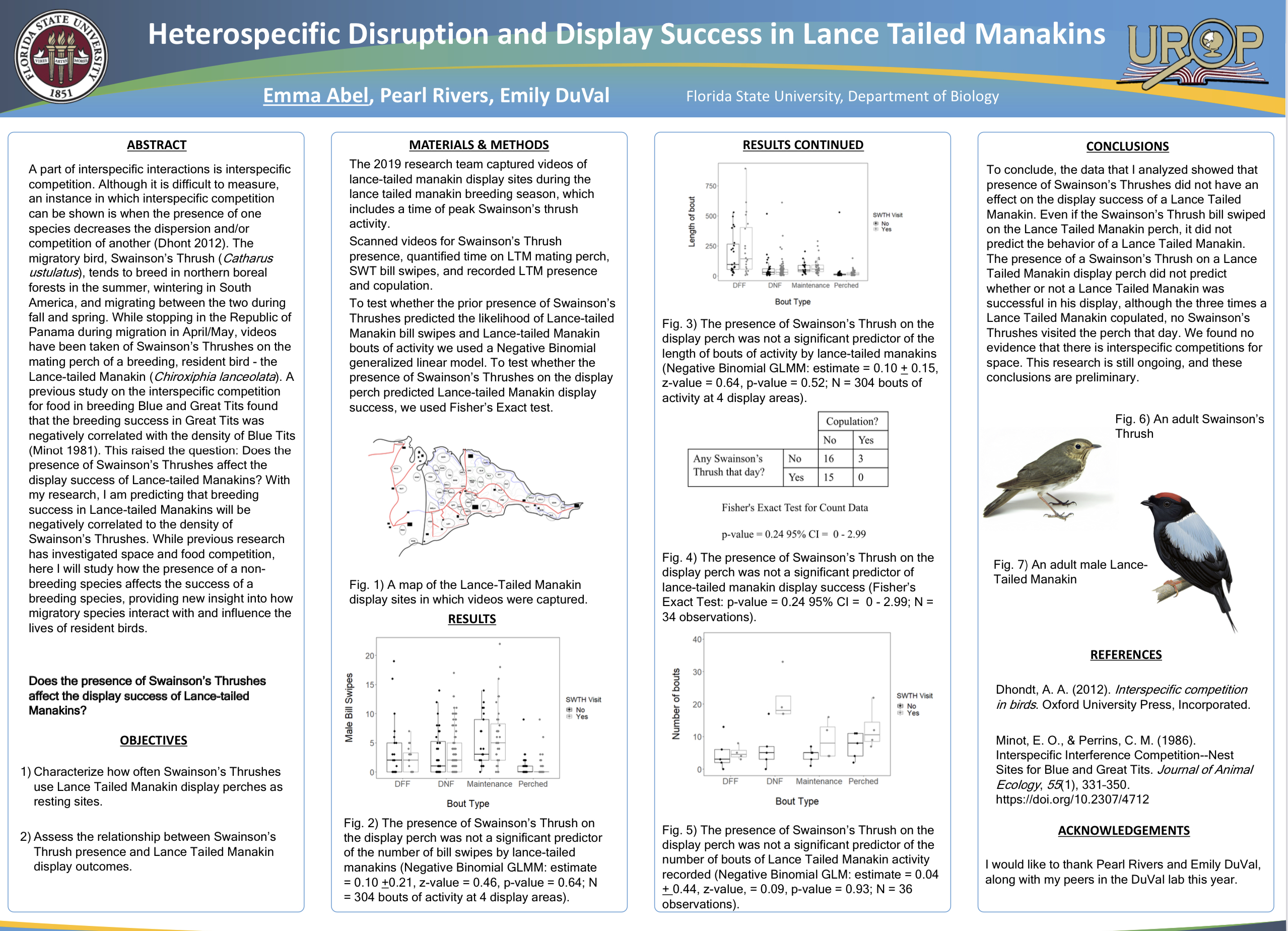Research Symposium
23rd annual Undergraduate Research Symposium, April 6, 2023
Emma Abel Poster Session 2: 1:30 pm - 2:30 pm/ Poster #103

BIO
I am from Tampa, Florida, interested in researching all things animal related! I fell in love with the fauna of Florida at a young age, catching lizards, snakes, frogs - even a squirrel - with my bare hands. More recently, I’ve taken care of abandoned ducklings and released them back to their ponds. Although birds are my forte, reptiles, amphibians, and mammals all peak my interest. My career goal is to become a wildlife conservationist!
Heterospecific disruption and display success in Lance Tailed Manakins
Authors: Emma Abel, Pearl RiversStudent Major: Biological Science
Mentor: Pearl Rivers
Mentor's Department: Biology Mentor's College: Arts and Science Co-Presenters:
Abstract
A part of interspecific interactions is interspecific competition. Although it is difficult to measure, an instance in which interspecific competition can be shown is when the presence of one species decreases the dispersion and/or competition of another (Dhont 2012). The migratory bird, Swainson’s Thrush (Catharus ustulatus), tends to breed in northern boreal forests in the summer, wintering in South America, and migrating between the two during fall and spring. While stopping in the Republic of Panama during migration in April/May, videos have been taken of Swainson’s Thrushes on the mating perch of a breeding, resident bird - the Lance-tailed Manakin (Chiroxiphia lanceolata). A previous study on the interspecific competition for food in breeding Blue and Great Tits found that the breeding success in Great Tits was negatively correlated with the density of Blue Tits (Minot 1981). This raised the question: Does the presence of Swainson’s Thrushes affect the display success of Lance-tailed Manakins? With my research, I am predicting that breeding success in Lance-tailed Manakins will be negatively correlated to the density of Swainson’s Thrushes. While previous research has investigated space and food competition, here I will study how the presence of a non-breeding species affects the success of a breeding species, providing new insight into how migratory species interact with and influence the lives of resident birds.
Keywords: Birds, animal behavior, biology, ecology


